
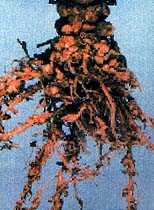

Nematodes are the most numerous multicellular animals on earth.
A handful of soil will contain thousands of the microscopic worms,
many of them parasites of insects, plants or animals. Free-living species
are abundant, including nematodes that feed on bacteria, fungi, and other
nematodes, yet the vast majority of species encountered are poorly
understood biologically. There are nearly 20,000 described species classified
in the phylum Nemata .
Nematodes are structurally simple organisms. Adult nematodes are comprised
of approximately 1,000 somatic cells, and potentially hundreds of cells
associated with the reproductive system . Nematodes have been characterized
as a tube within a tube ; referring to the alimentary canal which extends
from the mouth on the anterior end, to the anus located near the tail.
Nematodes possess digestive , nervous, excretory, and reproductive systems,
but lack a discrete circulatory or respiratory system.
In size they range from 0.3 mm to over 8 meters.


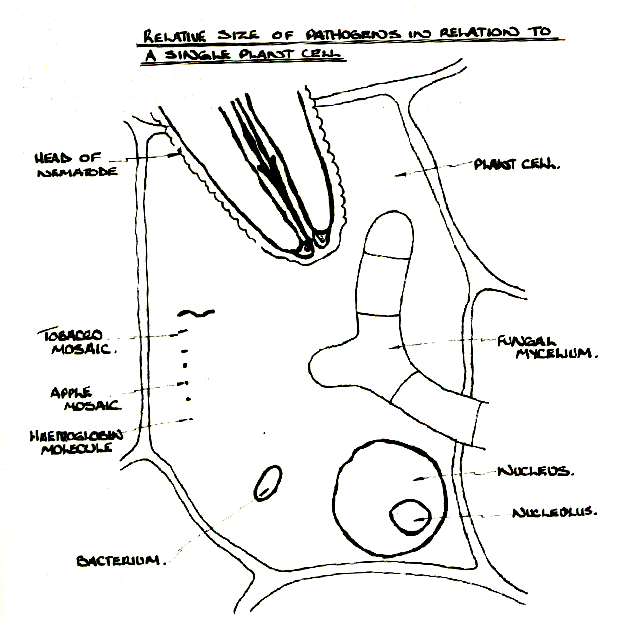
Common Snail
.
..Size: X
0.25
Any mollusk of the class Gastropoda (Gr. gaster, "stomach"; pous,
"foot") are generally characterized by a single shell and an asymmetric
body. They form the second largest class in the animal kingdom, outnumbered
only by insects. The most recent estimate of the number of known species
is 37,500, a revision downward from an earlier estimate of about 80,000.
Gastropods vary considerably in structure and way of life. The smallest
species are barely visible, whereas the largest, a sea slug, weighs up
to 13 kg (29 lb). Evolutionarily the animals are successful, being common
in most marine and freshwater habitats and the only mollusks to flourish
on land. The three gastropod subclasses are the Prosobranchia, the Opisthobranchia,
and the Pulmonata, described below.
Body Structure.
The ancestors of gastropods had bilateral symmetry; that is, they had
right and left sides. The animals evolved, however, so as to become asymmetric.
This happened through two processes, the first of which was torsion, a
twisting of the body. Originally the gills and anus of a gastropod were
at the hind end of the body. The left half of the body began to increase
in relative size, however, and the upper part of the body (including the
shell) rotated like a turret so that the gills and anus were now above
the head. The change may have taken place to protect the head or make it
easier for the body to balance the shell.
The second process leading to asymmetry was the development of a coiled
shell, which usually spirals to one side. Not all shells followed this
pattern; sometimes the shell is cap-shaped, with little or no coiling involved.
The latter kind of snail, called a limpet, can cling to rocks or shells
with its broad foot. When the shell is deep, however, it is usually coiled,
and the snail can then crawl about freely. If it needs protection, it can
withdraw into the shell and close the opening with a doorlike structure,
called an operculum, on the foot. A further development is seen in slugs,
which have lost or reduced the shell. Young slugs usually have well-developed
shells, but these are either shed or kept as a small remnant in the adult.
Both snails and slugs crawl slowly, mainly using waves of muscular contraction
of the single foot; some, however, can swim.
In ancestral gastropods a space called a mantle cavity, with two gills
and various body openings, existed above the head. In land snails and some
other species the gills have become lost or reduced, and the mantle cavity
has been transformed into a lung. In most gastropods the head usually bears
eyes and tentacles. The animals can see and smell fairly well, although
their behavior is not complicated. The mouth is usually equipped with a
rasplike tongue called a radula; this is also found in other mollusks.
Generally used in scraping up food, the radula may be considerably modified.
In cone shells the teeth on the tongue become dartlike, and some species
can inflict a dangerous wound. In oyster drills, the radula can bore through
a shell.
The gut of a gastropod is a coiled tube with various glands and sometimes
a gizzard. The nervous, circulatory, and reproductive systems are well
developed.
Lower gastropods have separate sexes and reproduce by spawning eggs
into the water, where they are fertilized with sperm and develop. The young
larvae swim about, settle, and mature. In advanced gastropods fertilization
takes place internally, and coverings are produced that protect the eggs
and young, which are sometimes also guarded by the female. At times the
whole development process is internal.
In the more modified subclasses Opisthobranchia and Pulmonata, the
animals are almost always hermaphroditic (containing both male and female
reproductive organs). This allows them to mate with any mature animal of
the same species. In some Pulmonata an ability to self-fertilize is common;
some snails can reproduce without fertilization of the eggs.
The abundant and diverse gastropods are an important part of the food
web, whether as herbivores, carnivores, or omnivores. Some are parasites,
and many specialize by feeding on unusual, hard to eat, or poorly digestible
materials. They are also an important source of food. The edible gastropods
include the abalone and other marine snails, such as the conch and the
periwinkle, and land snails of various types. The abalone is taken commercially
and as sport.
A few gastropods are harmful. Some snails and slugs damage crops and
garden plants, and others are pests in oyster beds. In some parts of the
world, freshwater snails harbor blood flukes, worms that cause a serious
disease in humans.
The first gastropods appeared in the early Cambrian period, about 600
million years ago. The most primitive living gastropods are of the subclass
Prosobranchia and are mostly marine, with a few freshwater and terrestrial
species. The three suborders are Archaeogastropoda (archaic forms such
as abalone and limpets), Mesogastropoda, and Neogastropoda (advanced forms
such as oyster drills and cone shells).
The subclass Opisthobranchia is almost wholly marine. The shell tends
to be reduced, and the gill migrates toward the rear of the body. Eight
orders exist, including the less modified tectibranches (bubble shells,
sea hares, and allies), the shell-less nudibranches, and two groups of
pteropods that swim in the plankton.
In the subclass Pulmonata the mantle cavity has become a lung, and
the operculum is lost. The group has a few marine forms. Most terrestrial
snails and slugs belong to the order Stylommatophora, and most freshwater
snails belong to Basommatophora.
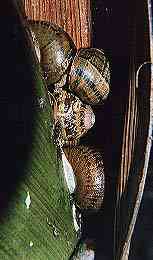
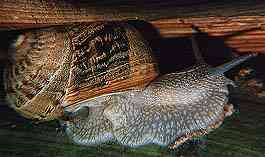

Thrip
Common name for minute insects constituting the order Thysanoptera.
Thrips are found worldwide and feed on a wide range of plants, including
important crops and ornamentals. Most species are no more than 1.5 mm (0.06
in) long as adults; some are wingless, but others have two pairs of short
wings fringed with hairs. Both adults and nymphs have sucking, piercing
mouthparts. Although thrips pollinate some plants and also eat some insect
pests, they are mainly considered pests and are controlled with insecticides.
Species such as onion thrips, Thrips tabaci, also transmit plant diseases.
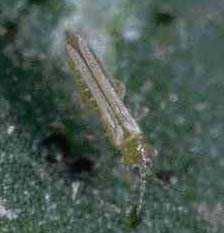
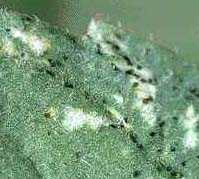
Virus
(Latin for "Poison")
Any of a number of organic entities consisting simply of genetic material
surrounded by a protective coat. The term virus was first used in the 1890s
to describe agents that caused diseases but were smaller than bacteria.
By itself a virus is a lifeless form, but within living cells it can replicate
many times and harm its host in the process. The hundreds of viruses that
are known cause a wide range of diseases in humans, lower animals, insects,
and plants.
The existence of viruses was established in 1892, with the discovery
of tobacco mosaic virus. A few years later, viruses were found growing
in bacteria. Then, in 1935, the American biochemist Wendell Meredith Stanley
(1904-71) crystallized tobacco mosaic virus and showed that it is composed
only of the genetic material called ribonucleic acid, or RNA and
a protein covering. In the 1940s development of the electron microscope
made visualization of viruses possible for the first time. This was followed
by development of high-speed centrifuges used to concentrate and purify
viruses. The study of animal viruses reached a major turning point in the
1950s with the development of methods to culture cells that could support
virus replication in test tubes. Numerous viruses were subsequently discovered,
and in the 1960s and '70s most were analyzed to determine their physical
and chemical characteristics.
Viruses are submicroscopic intracellular parasites that consist of either
RNA or deoxyribonucleic acid (DNA)-never both-plus a protective coat of
protein or of protein combined with lipid or carbohydrate components. The
nucleic acid is usually a single molecule, either singly or doubly stranded.
Some viruses, however, may have nucleic acid that is segmented into two
or more pieces. The protein shell is termed the capsid, and the protein
subunits of the capsid are called capsomeres. Together these form the nucleocapsid.
Other viruses have an additional envelope that is usually acquired as the
nucleocapsid buds from the host cell. The complete virus particle is called
the virion. Viruses are the smallest entities that can replicate, but they
are obligate intracellular parasites; that is, their replication can take
place only in actively metabolizing cells. Outside of living cells, viruses
exist as inert macromolecules.
Viruses vary considerably in size and shape. Three basic structural
groups exist: isometric; rod shaped or elongated; and tadpolelike, with
head and tail (some bacteriophages). The smallest viruses are icosahedrons
(20-sided polygons) that measure about 18 to 20 nanometers wide (one-millionth
of a millimeter = 1 nanometer). The largest viruses are rod shaped. Some
rod-shaped viruses may measure several microns in length, but they are
still usually less than 100 nanometers in width. Thus, even the largest
viruses are below the limits of resolution of the light microscope, which
is used to study bacteria and other large microorganisms.
Many of the viruses with helical internal structure have outer coverings,
or envelopes, composed of lipoprotein or glycoprotein, or both. These viruses
appear roughly spherical or in various other shapes, and they range from
about 60 to more than 300 nanometers in diameter. Complex viruses, such
as some bacteriophages, have heads and a tubular tail, which attaches to
host bacteria. The pox viruses are brick shaped and have a complex protein
composition. These are exceptions, however, and most viruses have a simple
shape.
Viruses do not contain the enzymes and metabolic precursors necessary
for self-replication. They have to get these from the host cells that they
infect. Viral replication, therefore, is a process of separate synthesis
of viral components and assembly of these into new virus particles. Replication
begins when a virus enters the cell. The virus coat is removed by cellular
enzymes, and the virus RNA or DNA comes into contact with the appropriate
cell-replicative apparatus. There it directs the synthesis of proteins
specified by the viral nucleic acid. The nucleic acid then replicates itself,
and the protein subunits constituting the viral coat are synthesized. Thereafter
the two components are assembled into a new virus. One infecting virus
can give rise to thousands of progeny viruses. Some viruses are released
by destruction of the infected cell. Others are released by budding through
cell membranes and do not kill the cell. In some instances, infections
are "silent," in that viruses may replicate within the cell but cause no
obvious cell damage.
The RNA-containing viruses are unique among replicative systems in
that the RNA can replicate itself independently of DNA. In some cases,
the RNA can function directly as messenger RNA and replicate itself,
using the cell's ribosomal and metabolic precursor systems. In other cases,
RNA viruses carry within the coat an RNA-dependent enzyme that directs
the synthesis of virus RNA. Some RNA viruses, which have come to be known
as retroviruses, may produce an enzyme that can synthesize DNA from the
RNA molecule. The DNA thus formed then acts as the viral genetic material.
Bacterial viruses and animal viruses differ somewhat in their interaction
with the cell surface during infection. The "T even" bacteriophage that
infects the bacterium Escherichia coli, for instance, first attaches to
the surface and injects its DNA directly into the bacterium. No adsorption
and uncoating take place. The basic events of virus replication, however,
are the same after the nucleic acid enters the cell.
Viruses in Medicine.
Viruses represent the last major challenge to medical science in combating
infectious diseases. Many cause diseases that are of major importance to
humans and that are extraordinary in their diversity.
Included among virus diseases is the common cold, which affects millions
of people every year. Others are important because they are frequently
fatal. Among these are rabies, hemorrhagic fevers, encephalitic diseases,
poliomyelitis, and yellow fever. Most viruses, however, cause diseases
that usually only create acute discomfort unless the patient develops serious
complications from the virus or from a bacterial infection. Some of these
diseases are influenza, measles, mumps, fever blisters (herpes simplex),
chicken pox, shingles (herpes zoster), respiratory diseases, acute diarrhea,
warts, and hepatitis. Still others, such as rubella (German measles) virus
and cytomegalovirus, may cause serious abnormalities or death in unborn
infants. Acquired immune deficiency syndrome is caused by a retrovirus.
Only two retroviruses are unequivocally linked with human cancers but some
papilloma virus forms are suspected. Increasing evidence also indicates
that other viruses may be involved in some types of cancer and in chronic
diseases such as multiple sclerosis and other degenerative diseases. Some
of the viruses take a long time to cause disease; kuru and Creutzfeldt-Jakob
disease, both of which gradually destroy the brain, are slow virus diseases.
Viruses that cause important human disease are still being discovered.
Most can be isolated and identified by laboratory methods, but these usually
take several days to complete. One of the most recently discovered viruses
is rotavirus, the causal agent of infant gastroenteritis.
To cause new cases of disease, viruses must be spread from person to person. Many viruses, such as those causing influenza and measles, are transmitted by the respiratory route when virus-containing droplets are put into the air by people coughing and sneezing. Other viruses, such as those that cause diarrhea, are spread by the fecal-oral route. Still others, such as yellow fever and viruses called arboviruses, are spread by biting insects. Virus diseases are either present most of the time (endemic), causing disease in susceptible persons, or they come in large waves (epidemic) and attack thousands of people. An example of the latter kind is the almost yearly, worldwide occurrence of influenza.
Currently, no completely satisfactory treatments exist for virus infections,
because most drugs that destroy viruses also damage the cell. The drug
alpha-Adamantanamine is used extensively in some countries for treatment
of respiratory infections caused by influenza A viruses, and IsatinBetathiosemicarbazone
is effective against smallpox. Certain analogues of nucleic-acid precursors
also appear useful in severe herpes virus infections.
One promising antiviral agent, interferon is produced by the cell itself.
This nontoxic protein, which is produced by some animal cells infected
with viruses, can protect other cells against such infection. The use of
interferon for treating cancer is under intensive study. Until recently,
study of the use of interferon has been restricted by its limited availability
in pure form; but new techniques of molecular cloning of genetic material
now make it possible for scientists to obtain the protein in larger quantities.
Its relative value as an antiviral agent may be established within a few
years.
The only effective way to prevent viral infection is by the use of
vaccines. Vaccination for smallpox on a worldwide scale in the 1970s, for
example, eradicated this disease. Many antiviral vaccines have been developed
for humans and lower animals. Those for humans include vaccines for rubeola
(measles), rubella, poliomyelitis, and influenza. Immunization with a virus
vaccine stimulates the body's immune mechanism to produce a protein (called
antibody) that will protect against infection with the immunizing virus.
The viruses are always altered before they are used for immunization so
that they cannot themselves produce disease.
Plant Infections.
Viruses cause a wide variety of diseases in plants and frequently cause
serious damage to crops. Common plant-disease viruses are turnip yellow
mosaic virus, potato X virus, and tobacco mosaic virus. Plants have rigid
cell walls that plant viruses cannot penetrate; so the most important means
of plant-virus spread is provided by animals that feed on plants. Often,
healthy plants are inoculated by insects that carry on their mouthparts
viruses acquired while feeding on infected plants. Nematodes (roundworms)
may also transmit viruses while feeding on roots of healthy plants.
Plant viruses can accumulate in enormous quantities within infected
cells. For instance, tobacco mosaic virus may represent as much as 10 percent
of the dry weight of infected plants. Studies on the interaction of plant
viruses with plant cells are limited, because plants often cannot be infected
directly, but only by means such as an insect vector. Cell cultures in
test tubes, which can be infected with plant viruses, are not generally
available.
The study of viruses and their interaction with host cells has been
a major motivation for the host of fundamental biological studies at a
molecular level. For example, the existence of messenger RNA, which carries
the genetic code from DNA to define what proteins are made by a cell, was
discovered during studies of bacteriophages replicating in bacteria. Studies
of bacteriophages have also been instrumental in delineating the biochemical
factors that start and stop the utilization of genetic information. Knowledge
of how virus replication is controlled is fundamental to understanding
biochemical events in higher organisms.
The reason that viruses are so useful as model systems for studying
events that control genetic information is that viruses are, in essence,
small pieces of genetic information that is different from the genetic
information of the cell. This allows scientists to study a smaller and
simpler replicating system, but one that works on the same principle as
that of the host cell. Much of the research on viruses is aimed at understanding
their replicative mechanism in order to find ways to control their growth,
so that viral diseases can be eliminated. Studies on virus diseases have
also contributed greatly to understanding the body's immune response to
infectious agents. Antibodies in blood serum, as well as secretions of
the mucous membranes, all of which response to infectious agents. Antibodies
in blood serum, as well as secretions of the mucous membranes, all of which
help the body eliminate foreign elements such as viruses, have been more
thoroughly characterized by studying their responses to viral infection.
Intense scientific interest is now concentrated on studies designed to
isolate certain viral genes. These genes can be used in molecular cloning
systems to produce large amounts of particular virus proteins, which can
in turn be used as vaccines.